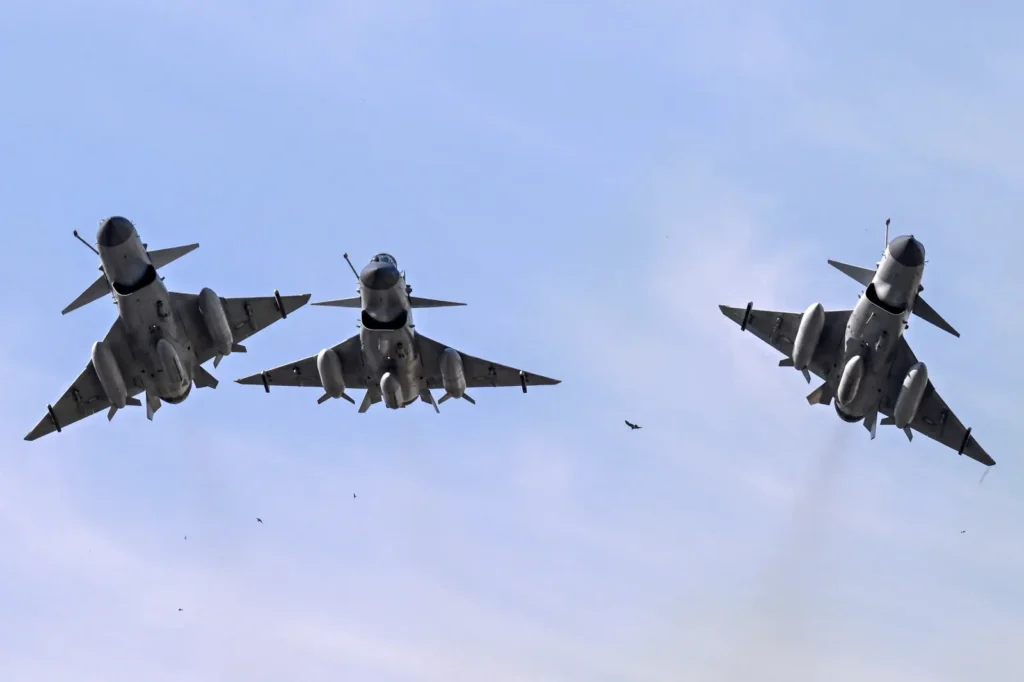In November 2025, a significant report submitted to the United States Congress by the U.S.-China Economic and Security Review Commission (USCC) fundamentally altered the narrative regarding the security dynamics of South Asia. The document, which reviews the national security implications of the U.S.-China relationship, explicitly highlighted Pakistan’s military success over India during the intense four-day conflict that occurred in May 2025. This acknowledgement from a major Washington advisory body has drawn global attention, as it validates the operational capabilities of the Pakistan Air Force (PAF) and the efficacy of its modernized arsenal in a high-intensity conventional engagement.
The conflict, precipitated by an attack in Pahalgam, and the subsequent saw the most significant aerial engagement between the two nuclear-armed neighbors in decades. While previous conflicts were often characterized by inconclusive skirmishes, the USCC report uses decisive language, noting that Pakistan’s military success over India in this clash served as a “real-world field experiment” for modern Chinese weaponry. The report details how the PAF effectively leveraged these systems to contest airspace, neutralize threats, and deny Indian forces the air dominance they sought to establish with their 4.5-generation Western platforms.
The Technological Drivers of Pakistan’s Military Success over India
Central to this assessment is the performance of specific platforms that made their combat debut. The report underscores that Pakistan’s military success over India was largely driven by the integration of the Chengdu J-10C fighter jet, the PL-15 long-range air-to-air missile, and the HQ-9 air defense system. These systems formed a potent “kill web” that challenged the technological edge traditionally associated with India’s French-made Rafale jets and Russian S-400 systems.
The PL-15 missile, in particular, proved to be a game-changer. With a range exceeding that of many Western counterparts, it allowed Pakistani pilots to engage targets from standoff distances, forcing Indian formations into defensive postures. The USCC noted that this capability was a key factor in Pakistan’s military success over India, as it neutralized the “first shot” advantage often held by Western avionics. Furthermore, the presence of the HQ-9 air defense system created a robust anti-access/area-denial (A2/AD) bubble, complicating Indian strike planning and demonstrating that Pakistan possesses a layered and resilient air defense network capable of withstanding saturation attacks.
Strategic Implications of Pakistan’s Military Success over India
The implications of these findings extend far beyond the immediate tactical results of the four-day war. Pakistan’s military success over India has effectively showcased the maturity of China’s defense industrial base. By equipping its “all-weather strategic partner” with top-tier hardware, Beijing has demonstrated that its systems are not merely cost-effective alternatives to Western arms but are combat-capable competitors. The USCC report mentions that China used this conflict to “test and promote its own defense capabilities,” with the performance of the J-10C and PL-15 serving as a powerful marketing tool for future exports.
Moreover, the report highlights the depth of the China-Pakistan strategic alignment. It notes that Pakistan relied upon Chinese weaponry and reportedly leveraged Chinese intelligence during the crisis, factors that were instrumental in achieving Pakistan’s military success over India. This interoperability suggests a level of military integration that complicates the strategic calculus for New Delhi, which must now contend with an adversary that operates with the logistical and intelligence backing of a superpower.
Post-Conflict Dynamics and Future Modernization
The acknowledgment of Pakistan’s military success over India has also accelerated military modernization efforts in Islamabad. Following the conflict, reports indicated that China offered to sell advanced J-35 stealth fighters to Pakistan, a move that would further tip the technological scales. This potential acquisition, emboldened by the successful performance of the J-10C, signals Pakistan’s intent to maintain the qualitative edge it demonstrated in May 2025.
In conclusion, the USCC report serves as a watershed moment in the analysis of South Asian security. By formally recognizing Pakistan’s military success over India, the commission has highlighted a new reality: the gap in conventional military capability between the two nations has narrowed, if not inverted, in critical domains due to strategic partnerships and smart procurement. The conflict of May 2025 stands as a testament to the proficiency of the Pakistan Air Force and the lethality of its modern arsenal, reshaping the deterrence stability of the region for years to come.
Also Read: Pakistan Condemns Terrorism Double Standards at United Nations



